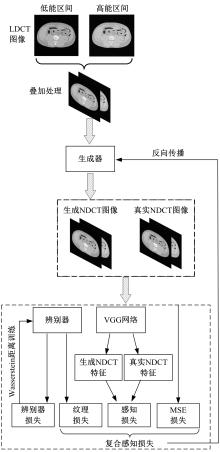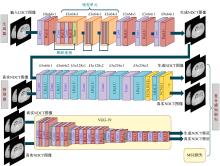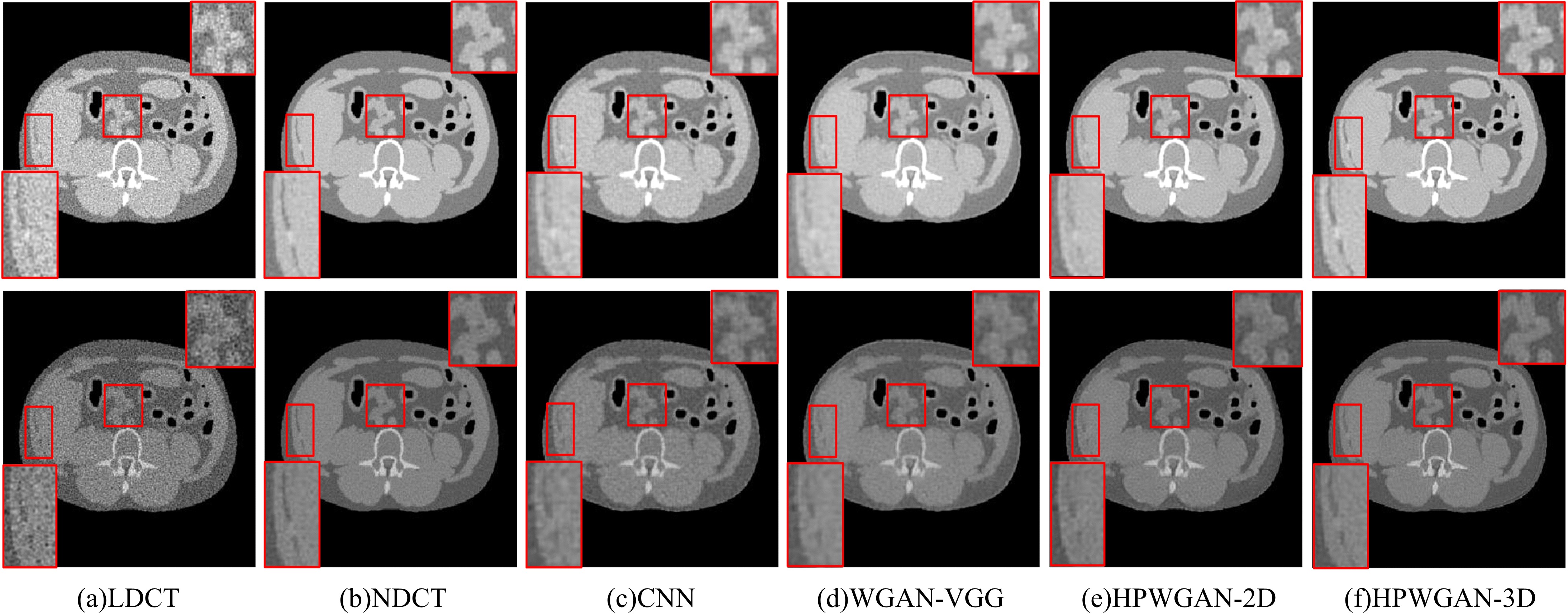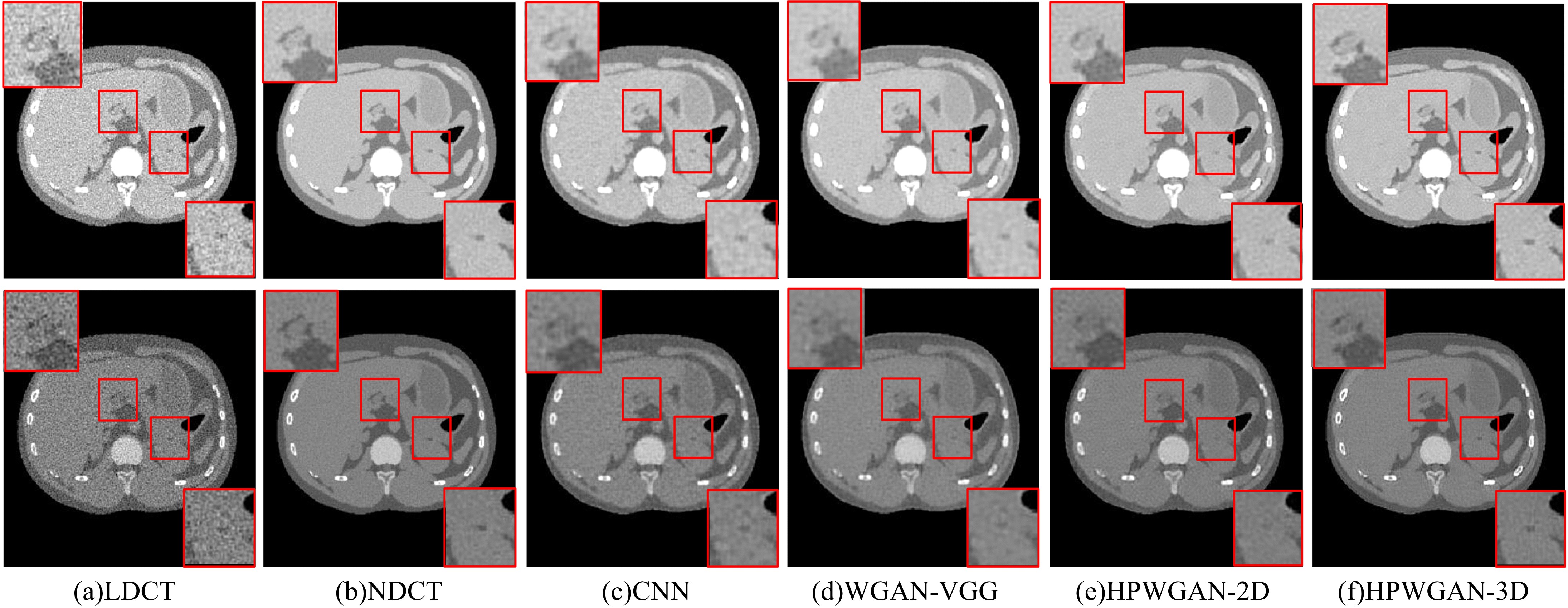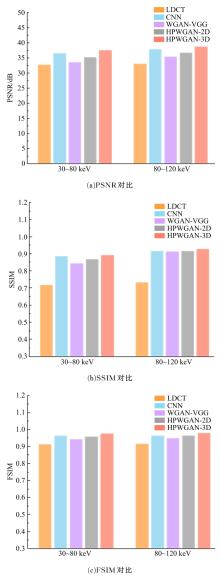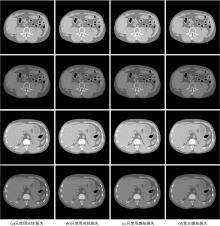Journal of Jilin University(Engineering and Technology Edition) ›› 2020, Vol. 50 ›› Issue (5): 1755-1764.doi: 10.13229/j.cnki.jdxbgxb20190554
Low⁃dose spectral computer⁃tomography imaging denoising method via a generative adversarial network
Zai-feng SHI1,2( ),Jin-zhuo LI1,Qing-jie CAO3,Hui-long LI1,Qi-xing HU1
),Jin-zhuo LI1,Qing-jie CAO3,Hui-long LI1,Qi-xing HU1
- 1.School of Microelectronics, Tianjin University, Tianjin 300072,China
2.Tianjin Key Laboratory of Imaging and Sensing Microelectronic Technology, Tianjin 300072,China
3.School of Mathematical Sciences, Tianjin Normal University, Tianjin 300387,China
CLC Number:
- TP391.4
| 1 | Brenner D J, Hall E J. Computed tomography-an increasing source of radiation exposure[J]. New England Journal of Medicine, 2007, 357(22): 2277-2284. |
| 2 | de Gonzalez A B, Mahesh M, Kim K P, et al. Projected cancer risks from computed tomographic scans performed in the united states in 2007[J]. Archives of Internal Medicine, 2009, 169(22): 2071-2077. |
| 3 | Wang J, Li T F, Lu H B, et al. Penalized weighted least-squares approach to sinogram noise reduction and image reconstruction for lowdose X-ray computed tomography[J]. IEEE Transactions on Medical Imaging, 2006, 25(10): 1272-1283. |
| 4 | Beister M, Kolditz D, Kalender W A. Iterative reconstruction methods in X-ray CT[J]. Physica Medica, 2012, 28(2): 94-108. |
| 5 | Liu Y, Ma J H, Fan Y, et al. Adaptive-weighted total variation minimization for sparse data toward low-dose X-ray computed tomography image reconstruction[J]. Physics in Medicine & Biology, 2012, 57(23): 7923-7956. |
| 6 | Yang C, Yin X D, Shi L Y, et al. Improving abdomen tumor low-dose CT images using a fast dictionary learning based processing[J]. Physics in Medicine & Biology, 2013, 58(16): 5803-5820. |
| 7 | Fumene F P, Vinegoni C, Gros J, et al. Block matching 3D random noise filtering for absorption optical projection tomography[J]. Physics in Medicine & Biology, 2010, 55(18): 5401-5415. |
| 8 | 郜峰利, 陶敏, 李雪妍, 等. 基于深度学习的CT影像脑卒中精准分割[J]. 吉林大学学报: 工学版, 2020, 50(2): 678-684. |
| Gao Feng-li, Tao Min, Li Xue-yan, et al. Accurate segmentation of stroke in CT image based on deep learning[J]. Journal of Jilin University(Engineering and Technology Edition), 2020, 50(2): 678-684. | |
| 9 | 司建波, 杨芳, 郭蔚莹, 等. 基于BP神经网络的两阶段疾病预测模型[J]. 吉林大学学报: 工学版, 2013, 43(): 481-484. |
| Si Jian-bo, Yang Fang, Guo Wei-ying, et al. Two-stage disease prediction model based on BP neural network[J]. Journal of Jilin University(Engineering and Technology Edition), 2013, 43(Sup.1): 481-484. | |
| 10 | Chen H, Zhang Y, Zhang W H, et al. Low-dose CT via convolutional neural network[J]. Biomedical Optics Express, 2017, 8(2): 679-694. |
| 11 | Wolterink J M, Leiner T, Viergever M A, et al. Generative adversarial networks for noise reduction in low-dose CT[J]. IEEE Transactions on Medical Imaging, 2017, 36(12): 2536-2545. |
| 12 | Yang Q S, Yan P K, Zhang Y B, et al. Low dose CT image denoising using a generative adversarial network with Wasserstein distance and perceptual loss[J]. IEEE Transactions on Medical Imaging, 2018, 37(6): 1348-1357. |
| 13 | Zhang Y B, Mou X Q, Wang G, et al. Tensor-based dictionary learning for spectral CT reconstruction[J]. IEEE Transactions on Medical Imaging, 2017, 36(1): 142-154. |
| 14 | Shi Z F, Yang H Y, Cong W X, et al. An edge-on charge-transfer design for energy-resolved X-ray detection[J]. Physics in Medicine and Biology, 2016, 61(11): 4183-4200. |
| [1] | Wei ZHANG,Yong HAN,Ming JIN,Xiao-lin QIAO. Toeplitz matrices reconstruction based DOA estimation for coherent signals [J]. Journal of Jilin University(Engineering and Technology Edition), 2020, 50(2): 703-710. |
| [2] | Yan-fen CHENG,Li-juan YAO,Qiao YUAN,Xian-qiao CHEN. Clearing strategy of underwater video image [J]. Journal of Jilin University(Engineering and Technology Edition), 2020, 50(2): 668-677. |
| [3] | Xiao-hui YU,Zhi-cheng ZHANG,Xin-bo LI,Xiao-dong SUN. Parameter estimation of exponentially damped sinusoidsbased on state⁃space model [J]. Journal of Jilin University(Engineering and Technology Edition), 2019, 49(6): 2083-2088. |
| [4] | Fu LIU, Mei-jing QUAN, Ke WANG, Yun LIU, Bing KANG, Zhi-wu HAN, Tao HOU. Indoor positioning method based on location fingerprinting of imitating mechanism of scorpion vibration source [J]. Journal of Jilin University(Engineering and Technology Edition), 2019, 49(6): 2076-2082. |
| [5] | Zi-ji MA,Hao LU,Yan-ru DONG. Dual path convolutional neural network forsingle image super⁃resolution [J]. Journal of Jilin University(Engineering and Technology Edition), 2019, 49(6): 2089-2097. |
| [6] | Yang LU,Shi-gang WANG,Wen-ting ZHAO,Yan ZHAO. Facial expression recognition based on separability assessment of discrete Shearlet transform [J]. Journal of Jilin University(Engineering and Technology Edition), 2019, 49(5): 1715-1725. |
| [7] | Chao DONG,Jing⁃hong LIU,Fang XU,Ren⁃hao WANG. Fast ship detection in optical remote sensing images [J]. Journal of Jilin University(Engineering and Technology Edition), 2019, 49(4): 1369-1376. |
| [8] | Ke⁃yan WANG,Yan HU,Huai WANG,Yun⁃song LI. Image dehazing algorithm by sky segmentation and superpixel⁃level dark channel [J]. Journal of Jilin University(Engineering and Technology Edition), 2019, 49(4): 1377-1384. |
| [9] | Lu⁃tao LIU,Na LI. Source detection based on coprime array [J]. Journal of Jilin University(Engineering and Technology Edition), 2019, 49(3): 986-993. |
| [10] | Tohtonur,Hai⁃long ZHANG,Jie WANG,Na WANG,Xin⁃chen YE,Wan⁃qiong WANG. High speed median filtering algorithm based on graphics processing unit [J]. Journal of Jilin University(Engineering and Technology Edition), 2019, 49(3): 979-985. |
| [11] | Yin⁃juan FU,Yong LI,Li⁃qin XU,Kun⁃hui ZHANG. Design and analysis of NLFM⁃Costas RF stealth radar signal [J]. Journal of Jilin University(Engineering and Technology Edition), 2019, 49(3): 994-999. |
| [12] | YING Huan,LIU Song-hua,TANG Bo-wen,HAN Li-fang,ZHOU Liang. Efficient deterministic replay technique based on adaptive release strategy [J]. Journal of Jilin University(Engineering and Technology Edition), 2018, 48(6): 1917-1924. |
| [13] | LIU Zhong-min,WANG Yang,LI Zhan-ming,HU Wen-jin. Image segmentation algorithm based on SLIC and fast nearest neighbor region merging [J]. Journal of Jilin University(Engineering and Technology Edition), 2018, 48(6): 1931-1937. |
| [14] | SHAN Ze-biao,LIU Xiao-song,SHI Hong-wei,WANG Chun-yang,SHI Yao-wu. DOA tracking algorithm using dynamic compressed sensing [J]. Journal of Jilin University(Engineering and Technology Edition), 2018, 48(6): 1938-1944. |
| [15] | QUAN Wei, HAO Xiao-ming, SUN Ya-dong, BAI Bao-hua, WANG Yu-ting. Development of individual objective lens for head-mounted projective display based on optical system of actual human eye [J]. 吉林大学学报(工学版), 2018, 48(4): 1291-1297. |
|
||
